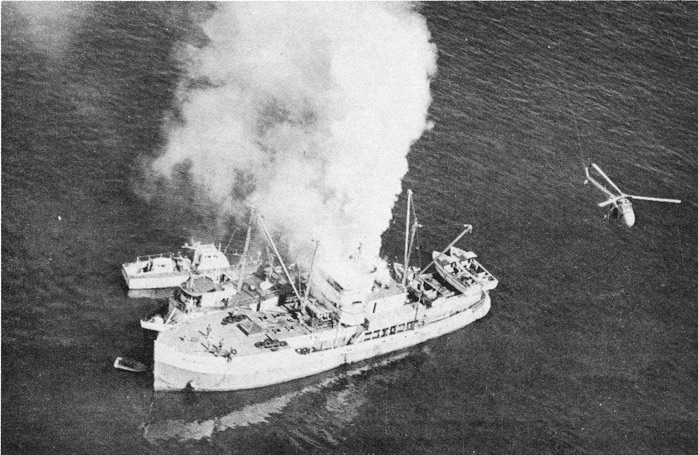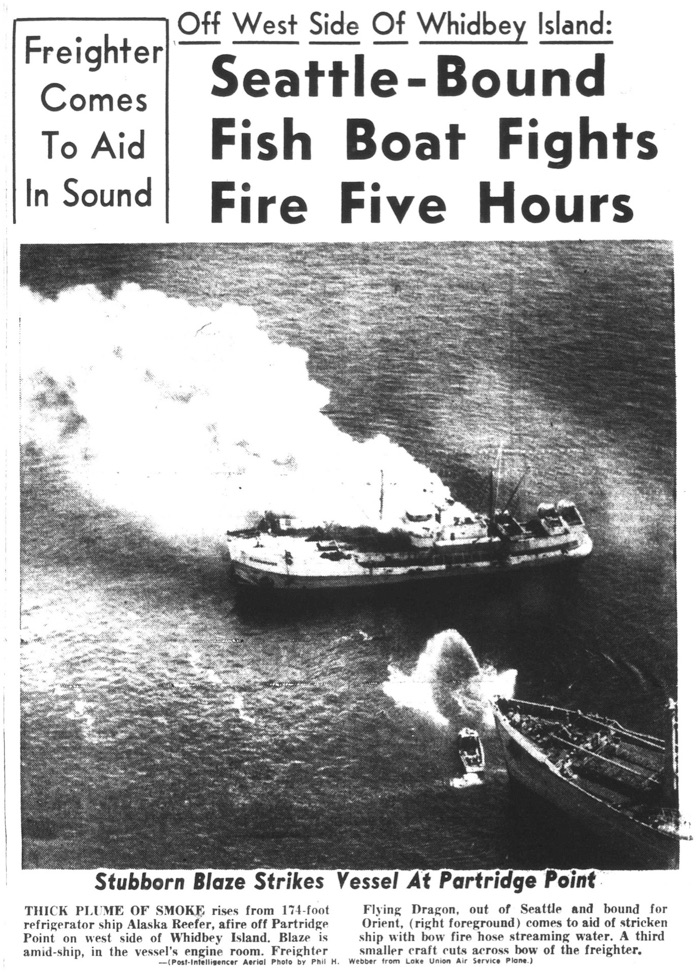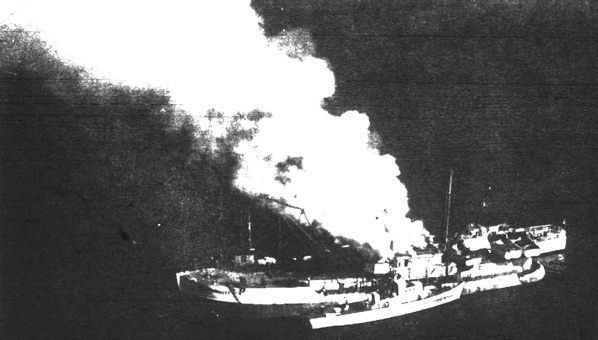Alaska Reefer


Alaska Reefer
The Alaska Reefer, a 174 foot converted Navy Yard Net Tender was laid down on March 9, 1943 by American Car and Foundry Co. in Wilmington, Delaware. She was listed as the YN-87 and launched January 16, 1944. Soon thereafter on January 20, 1944 the ship was re-designated AN-66 or USS Pinon; an Auxiliary Net Layer. The Pinon was commissioned on March 31, 1944.

The Pinon was a Ailanthus-class net laying ship that displaced 1,000 tons, had a beam of 37 feet, and a draft of 13’ 6”.

After the Pinons’ training and shakedown in the Atlantic she immediately steamed for Northern Ireland and arrived July 10, 1944. Through the fall, the Pinon provided vital net tending service in Belfast and England.
A net layers’/tenders’ primary function was to lay out and constantly maintain steel anti-torpedo or antisubmarine nets. These giant nets could be laid around an individual ship at anchor, around harbors or other anchorage's to ward off any enemy as well as their projectiles.
The Pinon continued until March 5, 1946 with service from Norfolk, Virginia to Saipan and Okinawa, until inevitable decommission. The Pinon was then struck from the Naval Register on March 20, 1946.
The Pinon was subsequently sold to John and Steve Vilicich and registered to the Tacoma based Alaska Reefer Fisheries Inc. and renamed the Alaska Reefer. The Reefer, deep in the bustling Alaska Salmon fishing trade in the early 1950’s, housed large refrigeration holds to forge ahead of the competition. The Reefer maintained her steady position for several more years, until fate rushed in like a rouge wave.
On August 28, 1961, around two o’clock in the afternoon, a powerful explosion in the engine room rocked the working ship. The Reefer returning from Bristol Bay, her holds laden with salmon, fiercely burned off Partridge Point, Whidbey Island. Three Coast Guard vessels, a Navy crash boat, several private vessels, and three helicopters fought the tumultuous blaze for nearly 5 hours. (Fires were reported extinguished but flared up again later) Coast Guard crewman Ken Linden remembered:
“We arrived on scene, rafted up the Reefer’s starboard side, and put a fire fighting team on board which included myself. The fire was primarily in the engine room... At a point it was believed that the Alaska Reefer was going to capsize to starboard and we abandoned our fire stations... The Minnetonka (WPG 67) still made up the port side commenced a side tow with the goal of moving the Reefer to the explosives anchorage area near Indian Island just east of Port Townsend. Eventually we reached the anchorage area and the Reefer was anchored or run aground where she apparently was allowed to burn herself out. I was told that the Reefer had sunk at about 0100, August 29.”

The Miss Janet, a purse-seiner on the scene, took aboard some of the 12 crew members of the Reefer, and it was later reported that none of the crew was injured. Crew of the other vessels unfortunately weren’t so lucky. Several men were treated for burns and vapor inhalation, and one of the officers suffered a possible rib fracture. But fortunately there were no deaths in this maritime disaster.

Courtesy Seattle PI
The Alaska Reefer now lies in about 20-50 feet of water.

Courtesy Seattle Times
Gibbs


-
-Home
